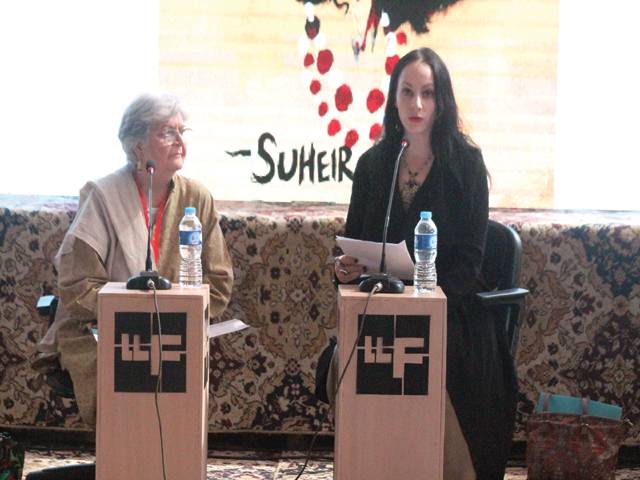LAHORE - A session highlighting the contribution of art in countering extremism was held at Lahore Literary Festival at Faletti's Hotel on Saturday.
The session ‘Art in the Age of Fascism’ highlighted how people could be saved from terror attacks and this menace of terrorism be controlled.
The session was moderated by Salima Hashmi with renowned artist and American journalist Molly Crabapple in panel discussion.
Molly, while speaking about art and fascism, expressed her grief: “I was going to give this talk on Sunday but sadly two bombs went off in Lahore. They were inspired by a violent religious fanaticism that feeds and is fed by the fascism taking over my own country.”
“I have combined art with journalism because I wanted to take art of the studio, out of the gallery, out of rich collectors’ homes and bring it into the mud and blood of the world.
“I started drawing at nightclubs for the depraved rich of New York City. Each night I used to capture the toughness and glamour of acrobats and artists. These men and women were as sharp as glittering as diamonds, and they gave the most of real education I have,” the American added.
She also shared her experience of covering Gaza war in 2014. “I have had my work looked over by the military censors at Guantanamo Bay. I have written about impossibly brave prisoners who blew the whistle on abuses in solitary confinement in Pennsylvania and reported on workers in Abu Dhabi who are paid 21,000 rupees a month to build great museum of the future,” Molly told the session.
About the controversies surrounding the US elections, she said: “The presidency of Donald trump is the showiest example of a global love affair with fascism. Now the question is, in this entire scenario, what could art do against that? Historically artists and power have gone together like bread and butter. The first step is realising what we are up against.”
“There’s a false dichotomy set up, by the strutting, puffing strong men that have captured so many governments. They divide their countries into the real people and the fake. The fake person usually encompasses ethnic minorities, improvised refugee’s decadent urban elites. On the other side, the real people paint a fine picture.”
About her experience in Lahore, she said: “I saw something that reminded me of how art, even at the distance of hundreds of years, has the power to cut off official lies.
“Sheesh Mahal in Lahore Fort is perhaps one of the most dazzling places I have even seen. The countless mirrors of which once cast the flickering, tricky candle light the colours of Kathak dance costumes. Shesh Mahal was a place for royalty, but with art, we can construct new, broader parodies.”
She concluded the session saying we must write books, sing songs, paint walls in the colours that express what we are. “May be we won’t win but our art will still exist as reminders for a more open future.”






